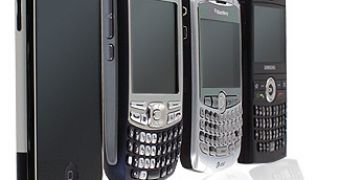One of the mobile market segments having registered impressive growth lately is the smartphone area, which went up even if the entire market was shrinking due to the financial turmoil. However, while the surge of smartphones is good news, since consumers benefit from enhanced features on their mobile devices, it is also seen as one of the main reasons for which the quality of calls has been declining. According to the J.D. Power and Associates 2010 Wireless Call Quality Performance Study, the call quality performance in the US has decreased during the past six months, affected by an increased usage of smartphones.
The semiannual study analyzes the wireless call quality based on seven key areas that can impact the overall performance of a carrier, including dropped calls, static/interference, failed call connection on the first try, voice distortion, echoes, no immediate voicemail notification, and no immediate text message notification. The issues are measured as problems per 100 (PP100) calls, and the lowest sore shows that there are only a few issues with the network and that the performance is high. The study has examined call quality across six regions, including Northeast, Mid-Atlantic, Southeast, North Central, Southwest, and West.
According to the study, there have been several consecutive six-month periods during which the number of connectivity and audio issues were decreasing, mainly due to network upgrades, but the problems have increased significantly in 2010, going up to 13 PP100, compared to 11 PP100 six months ago. Dropped calls increased from 4 PP100 to 6 PP100, and the study also shows that smartphone users are registering issues at a rate of that is 6 PP100 greater than those signaled by traditional handset customers. Moreover, it seems that “smartphone customers are nearly three times more likely to experience dropped calls than are traditional mobile phone customers,” the study shows.
“As carriers continue to upgrade network infrastructure, expand coverage areas and improve data speeds, smartphone usage will continue to test network capacity,” said Kirk Parsons, senior director of wireless services at J.D. Power and Associates. “Smartphones will continue to stress wireless networks with higher data usage for texting, e-mailing and Web surfing, so it is crucial for wireless carriers to enhance existing network speed and capacity, as well as to develop and upgrade to next-generation technologies.” The study also shows that the rate is six times higher among customers who are decided to switch carriers next year (42 PP100), compared to those who have no plans on switching (8 PP100).

 14 DAY TRIAL //
14 DAY TRIAL //